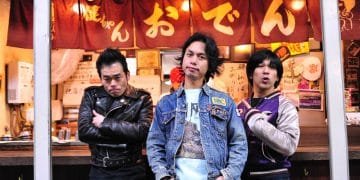The British Museum will present the largest exhibition of manga ever held outside of Japan. A multi-billion-pound business that embraces anime and gaming, manga are a global phenomenon and have forged a new international visual language. The original translation of the characters for manga was ‘pictures run riot’, associated with the great 19th-century Japanese artist Katsushika Hokusai whose miscellaneous drawings of people, animals and nature were published as ‘Hokusai Manga’. Since then, however, the medium has evolved to become a form of immersive storytelling with unique characters and embracing universal issues. The Citi exhibition Manga will bring to life the art of manga, looking at how it emerged in Japan and grew to be a worldwide cultural phenomenon. It will explore the enduring appeal and cultural crossover of manga, showcasing original Japanese manga and its enormous influence, from anime to gaming to the performance art that is called cosplay. The Citi exhibition Manga will run from 23 May to 26 August 2019 in the Sainsbury Exhibitions Gallery at the British Museum.
The exhibition is divided into six zones, with a special introduction in the foyer and a uniquely themed exit space where the visitors can choose to become manga-fied by a specially designed camera. Before the visitor enters the exhibition space, a small digital print display of Alice’s Adventures in Wonderland will be encountered, juxtaposed with a copy of an original work by Lewis Carroll and select Japanese manga versions. This small opening display demonstrates how a universally known story can be adapted through the medium of manga in engaging and even startling ways. After presenting their admission ticket the visitor enters a conceptual rabbit hole and lands in the first of six exhibition zones.
The first zone, ‘Understanding Manga’ gives the visitor the basic tools to read manga, focusing on reading, drawing and producing manga. Kouno Fumiyo’s characters from Giga town introduce symbols (manpu) employed in manga that form its grammar. This zone then explores the act of drawing manga through live footage and select manga genga or manga-original drawings. The zone closes with a look at the role of the editor and publisher in producing manga.
The second zone, ‘Power of Storytelling’, explores the power of visual storytelling in manga, examining manga’s historical roots and its present reality. Various printed formats and subject matter are explored. At the end of this zone there is a special digitally led display of a bookstore and reading space, where analogue and digital worlds combine: manga books (tankobon) and magazines can be handled and read and there is a space to digitally download for free. There is also a digital experience based around Hoshino Yukinobu’s Professor Munakata’s British Museum Adventure, literally drawing the visitor into the manga of the museum. Finally, we are virtually welcomed into Comic Takaoka in Jinbocho, Tokyo, one of the oldest continuing manga bookstores in Japan.
The third zone, ‘Seen and Unseen Worlds’, is where, having received the skills of learning to read and understand manga and its history, the visitor is encouraged to explore manga genres and find their own favourite of manga. This zone focusses on the seen worlds of sports, adventure, science fiction, transformation, love and eros, and the unseen worlds of belief, spirit worlds and horror-themed manga.
The fourth zone shifts to manga and its role in society, starting with manga’s basic fan groups, grassroots manga, and fan creation. In particular, Comiket events and the importance of Cosplay are emphasized. The zone then moves to manga around us, in society, in education, manga in an uncertain 21st-century world, and manga in museums.
The fifth zone, displayed along the 70-metre-long walls of the Sainsbury Exhibition Galleries are major historical and manga artists’ works in original drawings and blowup versions of their iconic characters, from Takemiya Keiko to Otomo Katsuhiro. A highlight is the majestic 17-metre Kabuki curtain for the Shintomiza theatre in Tokyo by Kawanabe Kyosai, from1880.
The concluding, sixth section examines manga’s expanding boundaries, including avant-garde expression, media cross over, gaming with a focus on Pokemon and manga’s growing international reach and cultural influence.
The exhibition has a bespoke mascot avatar, a plucky white rabbit named Mimi-chan, created by the manga artist Kouno Fumiyo, who accompanies viewers through the exhibition in a fun and helpful way.
The British Museum has itself starred in a manga, in Hoshino Yukinobu’s 2010 Professor Munakata’s British Museum Adventure, in which a popular character, professor of folklore at the fictional Toua Bunka University, embarks on a gripping adventure of potential robbery and retribution in the Museum galleries.
Source: British Museum













